CR123A batteries are a group of primary and rechargeable lithium batteries. Depending on the sub-type, chemistry, design, specifications, they are also known as CR123 battery, RCR123A battery, 16340 battery, 17340 battery, 2/3A battery, etc. When buying replacement batteries for your cordless vacuum cleaner, it is important to know a few technical details about them. Today we will discuss the CR123A battery rechargeable: specs, features, and other important aspects.
CR123A – Physical Dimensions, Naming Convention and Comparison
The CR123A battery is a cylindrical battery. It has a diameter of 17 mm and it is 34.5mm long.
A CR123A lithium battery can be a primary battery (non-rechargeable lithium battery) that can deliver 3V.
It can be lithium-ion, lithium polymer or even lithium phosphate battery (rechargeable lithium battery) and deliver 3.2 – 3.7V per cell, depending on the chemistry.
CR123A 3V Lithium Battery
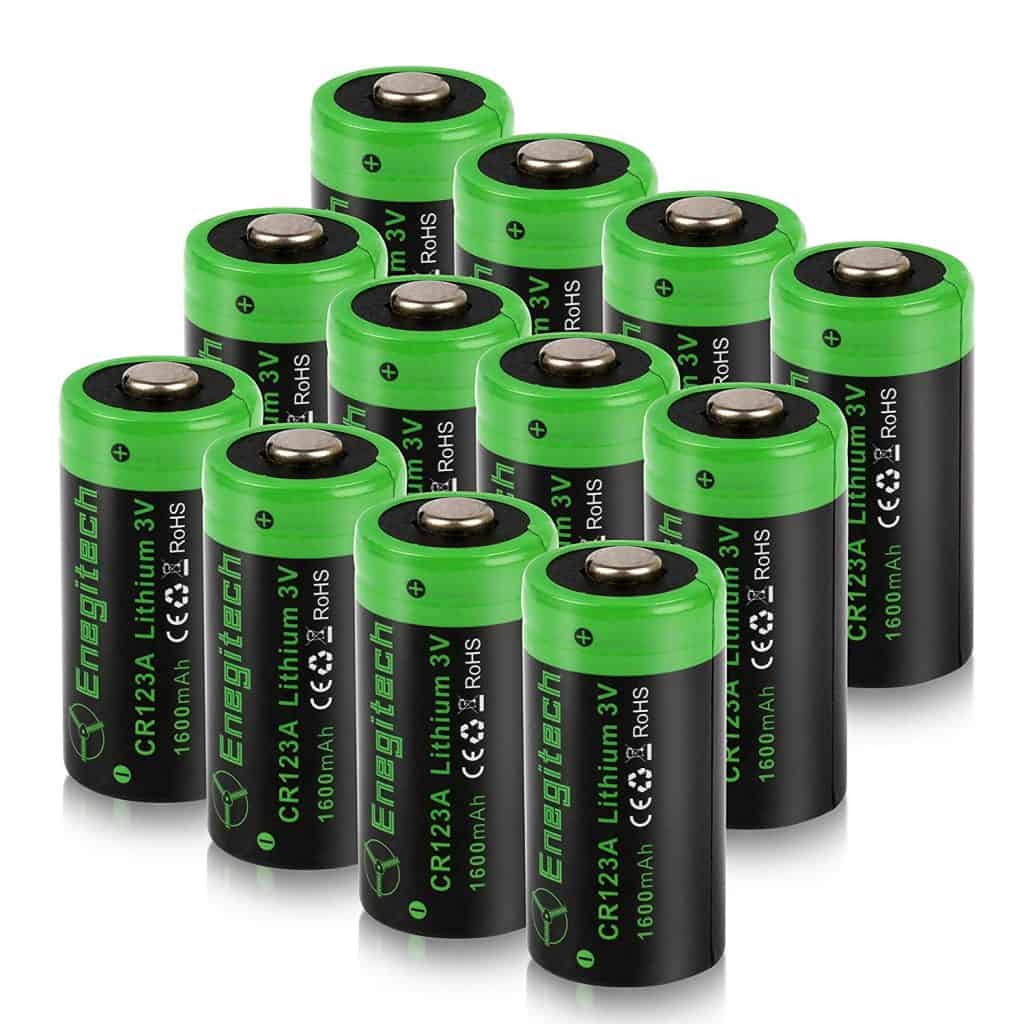
To distinguish non-rechargeable CR123A lithium battery from rechargeable lithium CR123A battery, rechargeable CR123A is often marked as ‘RCR123A’ battery, 16340 battery, 17340 battery, protected CR123A battery, CR17345 battery and similar.
CR123A vs. CR123 Battery Rechargeable
CR123A battery is often written without ‘A’ letter – CR123 battery.
Actually, there is no difference between CR123 and CR123a batteries – only their names are different because CR123A is the most common name and people simply omit or forget to add ‘A’ letter after CR123. Simple as that.
16340 lithium battery has a diameter of 16 mm and is 34 mm long, while 17340 lithium battery has a diameter of 17mm and is also 34 mm long – thus the names.
The 16340/17340 rechargeable lithium-ion batteries and RCR123A or rechargeable CR123A lithium batteries are simply different designations for the same batteries. Many manufacturers often use all or at least some of them, when describing their batteries in order to emphasize products which can be replaced with their batteries.
CR2 vs CR123 Battery
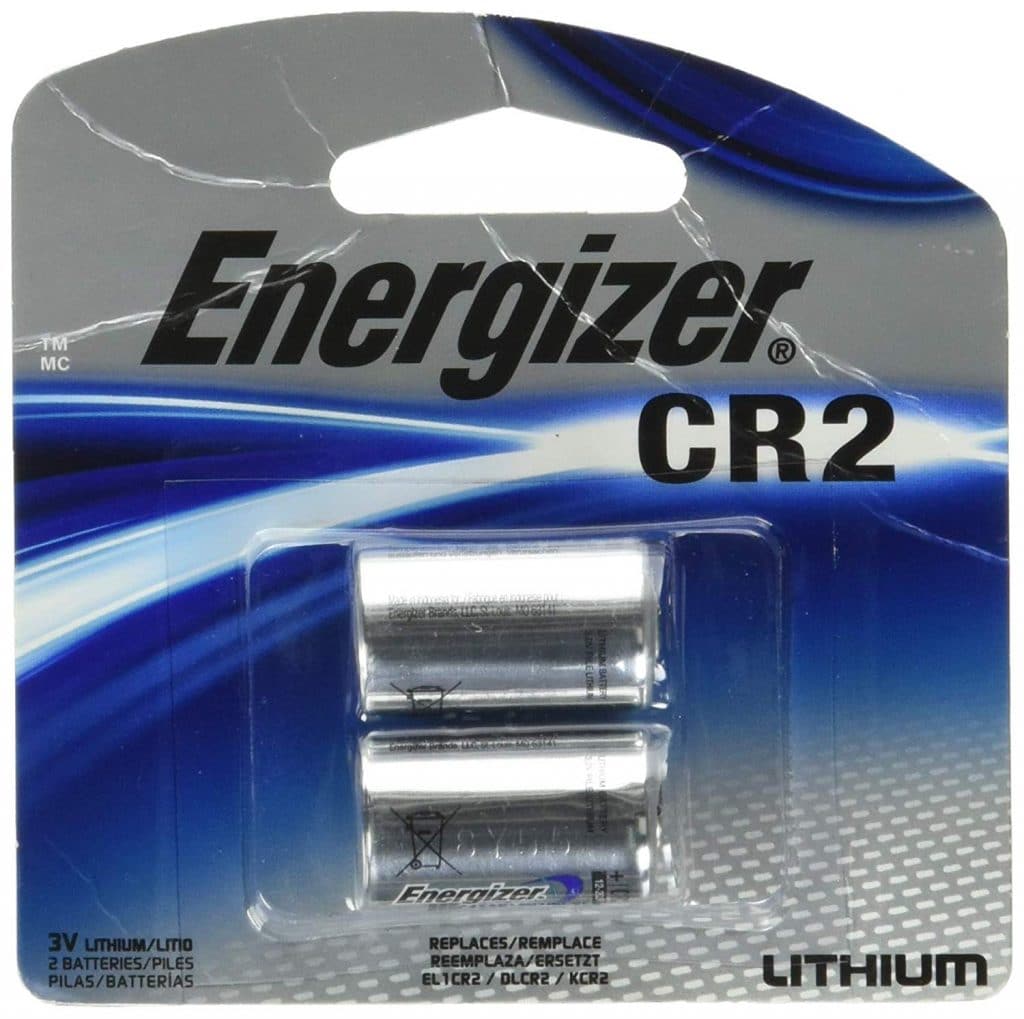
The CR2 lithium battery is commonly used in photo equipment. They also come as primary (3V) and as rechargeable (3.6 – 3.7V) batteries.
The 15270 or 15266 batteries are ‘substitutes’ for CR2 lithium batteries and can be protected or unprotected. Their capacity varies from 500 to 1000 mAh, depending on their type and chemistry. Their nominal height is ~27 mm and diameter ~15.6 mm.
There is no way to directly replace CR123A batteries with CR2 and vice versa 🙂
18650 vs CR123A vs AAA
Some high drain devices like flashlights and various cameras have wide input voltage and can use 18650 batteries or twice as many CR123A batteries or can even use AAA battery holder instead of 18650 battery.
Increased voltage often leads to better performance and higher energy efficiency.
Important Note: Not all devices designed for 18650 battery allow this replacement, and in fact, higher voltage can cause damage and fire!
Primary CR123A Lithium Batteries
Primary CR123A batteries are non-rechargeable types of lithium batteries, commonly based on Li-MnO2 (lithium – manganese dioxide) chemistry.
- Typical capacity is around 1500 mAh and they are often used in devices like flashlights, photo and medical equipment and similar.
- Standard nominal voltage is 3V and thanks to the use of lithium, they are very light and can withstand rather large discharge currents.
- These batteries’ shelf life is regularly 7-10 years, sometimes, even more, making them also suitable for devices which are used only occasionally (‘panic lights’, for example), but which require a reliable source of electricity.
- Quality of CR123A batteries varies, so it is perhaps the best practice to get them in the bulk, from the reputable brands.
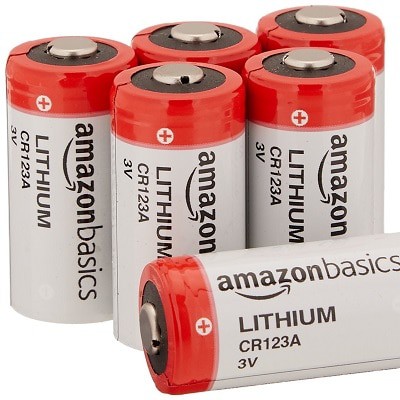
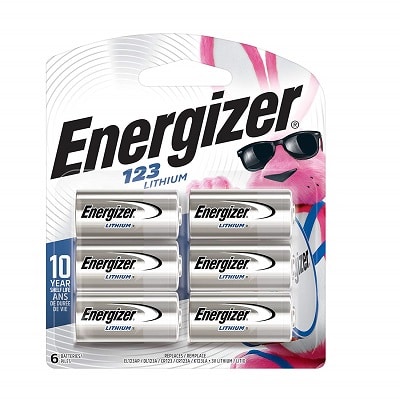
Primary CR123A lithium batteries are not used in cordless vacuums. However, rechargeable CR123A batteries offer many advantages.
RCR123A – Rechargeable CR123A Lithium Batteries
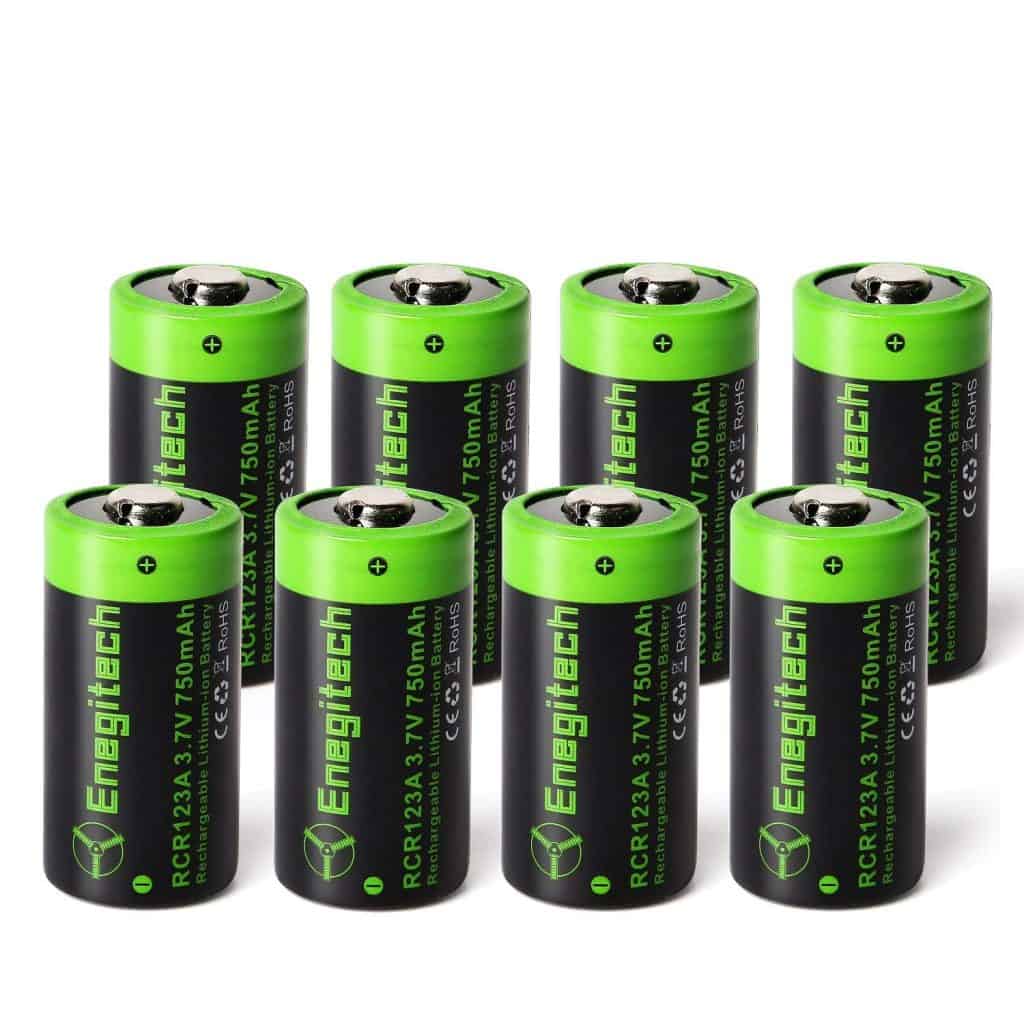
Commonly, the RCR123A or 16340 battery is ‘protected’ lithium-ion rechargeable battery, with built-in protection:
- overcharging protection,
- over-discharging protection,
- maximum discharge current protection,
- short-circuit protection,
- thermal overheat protection,
- pressure relief valve protection, etc.
Of course, not all ‘protected’ batteries have all these features, but because of the lithium-ion battery nature, these batteries should have at least thermal and charging/discharging protection. IMHO, of course.
RCR123A Batteries Uses
- RCR123A batteries are often used in high power devices like cordless drills and cordless vacuums – devices that require a reliable source of energy;
- Devices that must be able to operate at the moment notice and which must be recharged quickly.
RCR123A batteries have a capacity between 600 mAh and 2000 mAh. Depending on the maximum allowed current, large capacity batteries are rarely suited for high power devices. Large discharge currents can shorten their operating life from 500-1000 charge/discharge cycle to just a few of them, especially if they are some cheap models without built-in protection.
The best rechargeable CR123A lithium batteries for high power devices have a capacity between 600 and 1000 mAh and come with built-in protective electronics. Thanks to improvements in lithium-ion batteries, their self-discharge rate is almost negligible, while the memory effect is practically non-existent.
When replacing vacuum cleaner batteries, it is vital to use the batteries of the same chemistry type and of the same or larger capacity, capable to provide the same or larger currents.
CR123A Lithium Battery Chargers
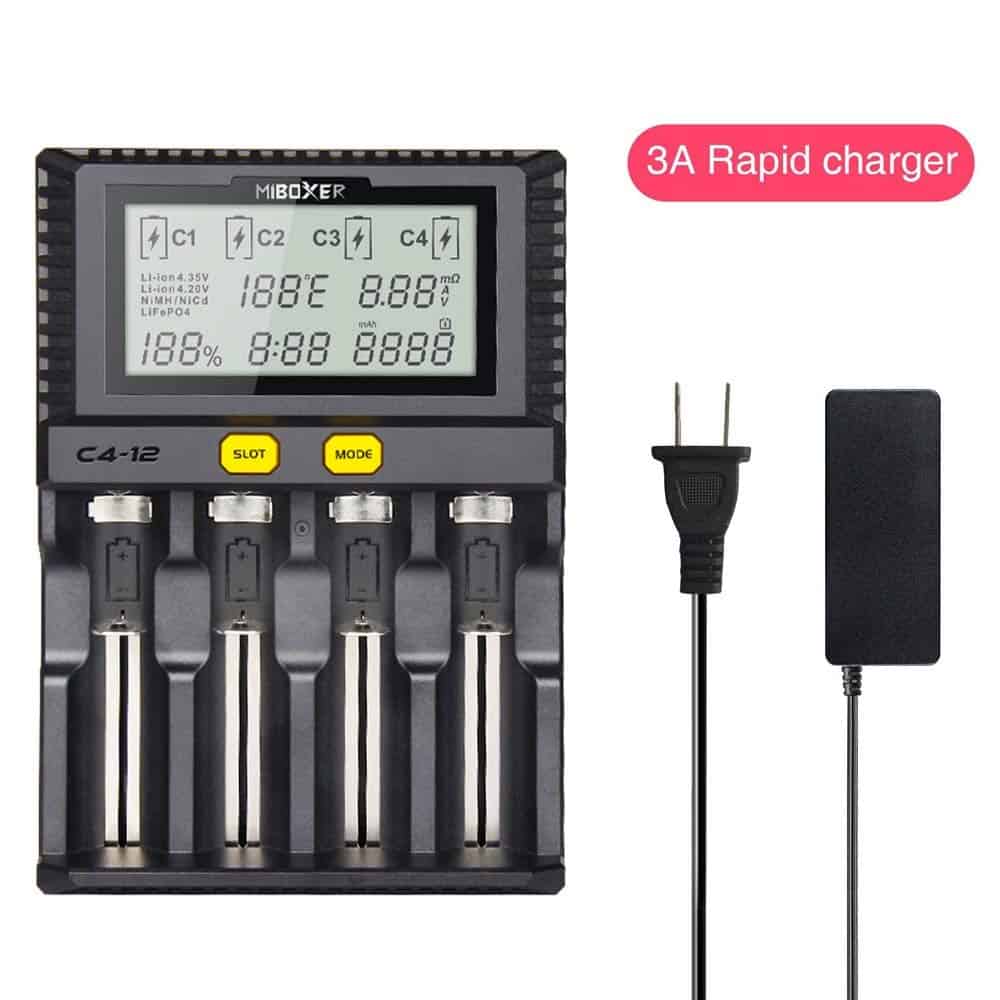
Since lithium batteries pack a considerable amount of energy in a rather small and lightweight package, it is of essential importance to charge them with proper chargers.
Otherwise, these batteries can catch fire or they can explode when overcharged and/or overheated – seriously!
It is very important that the CR123A charger has built-in voltage/overcharge protection, combined with a thermal sensor. Also, a good battery charger should have a battery test option and if possible, both charge and recharge option.
Lithium powered vacuum cleaners come with their own battery chargers and if one wishes to continue to use them, AGAIN, new batteries must be of the same chemistry and the same or larger capacity – preferably from the same manufacturer! This cannot be emphasized enough!
General-purpose CR123A battery chargers can be found on Amazon.
CR123A Battery Rechargeable FAQs
There is no difference between the two, just the name. Otherwise, they feature the same tech specs and size. CR123A is the most commonly used name.
Depending on the brand you buy and the frequency of use, a cr123a battery can last up to 5 years.
Some of the most common uses of cr123a batteries are photo cameras and equipment, light meters, and flashlights, among others.

With a degree in engineering, Kathryn Hansen loves to write about how things work. Having her own dilemmas on how to pick the best vacuum cleaner for her large family (with a handful of furry four-legged members as well), Kathryn decided to help others in the same situation. After all, vacuum cleaners are critical to a healthy lifestyle and people have a hard time choosing the best one for their needs.

Can you use a RCR123 3.7V Rechargable battery to Replace a CR123 3V non-rechargable battery.
Will the RCR123 3.7V force the device to pull 3.7V or will the device simply pull 3V as needed.
Good day to everyone, the information you have provided was so useful…thank you. But my real concern is very simple I recently bought an olight valkerie, it is a 1000 lumen pistol light that runs on an olight 3v cr123 batteries. I have since been researching a rechargeable alternative, as I wanted to train in low light scenarios, although the 3v cr123 olight batteries have been very effective, I needed to have a cheaper alternative that may be rechargeable, I came into the 3.7v rcr123 olight rechargeable batteries, but I was told by the local supplier that it may not be compatible with the 3v pistol light due to its volt out put. So, may i ask is the 3.7v batteries replace the olight 3v for the olight valkerie pistol light?
thank you in advance,
wilfindu
have a torchexpro battery is barely over 2 1/2” what do I replace it with. cannot find anything on line. thanks.